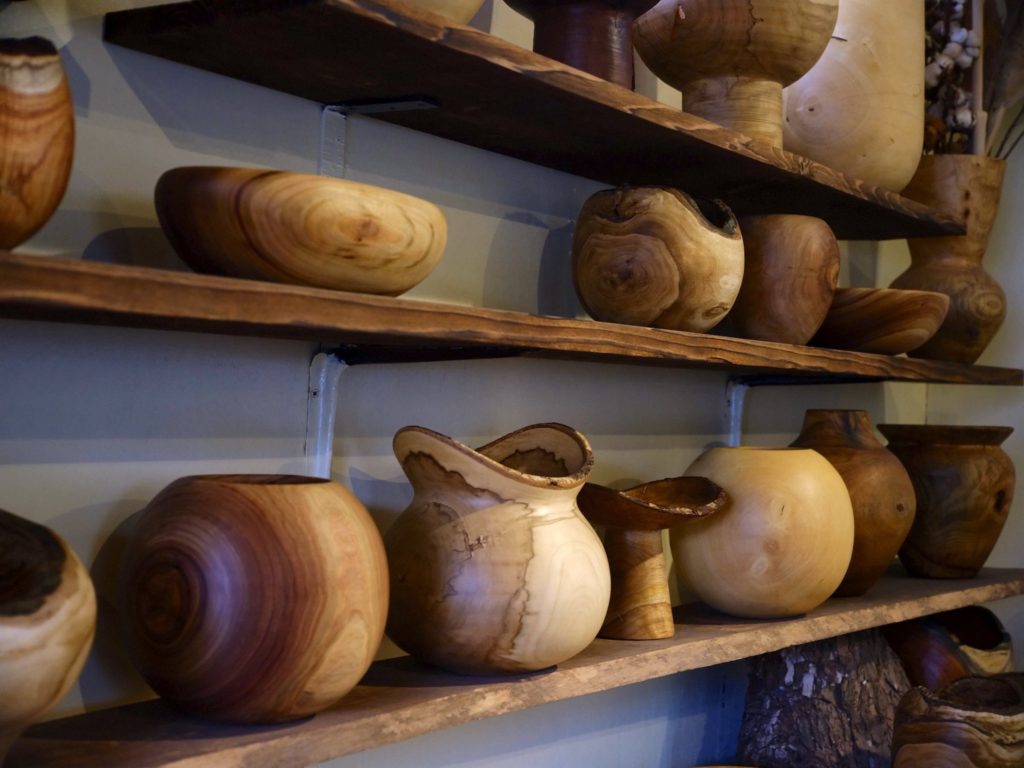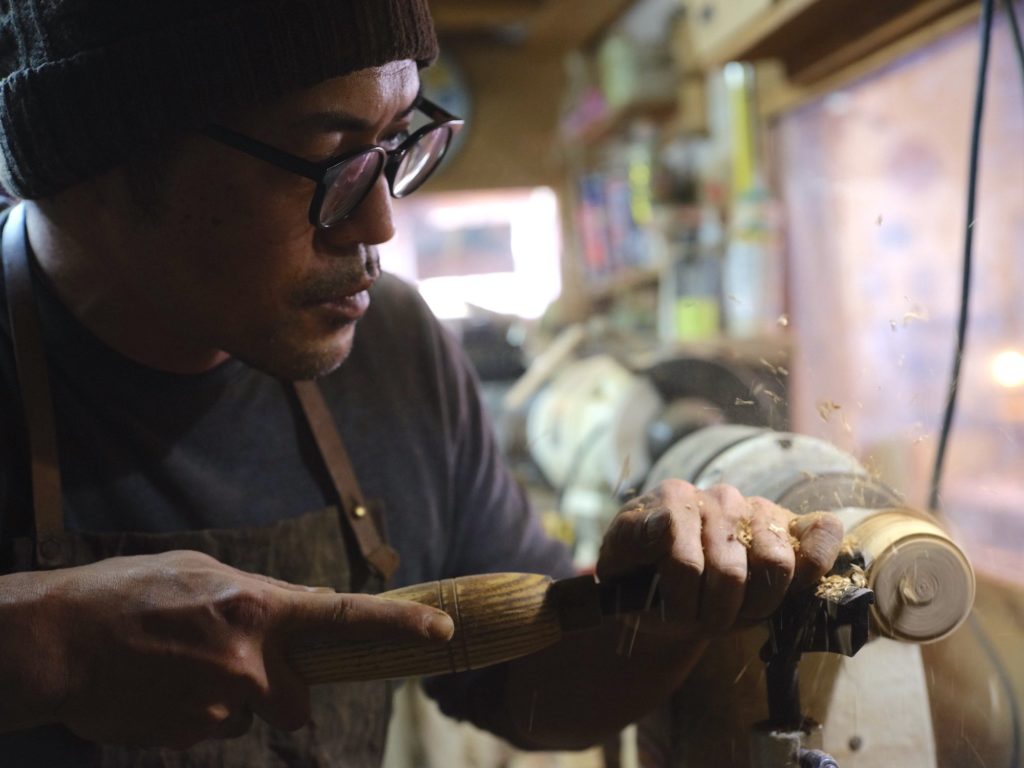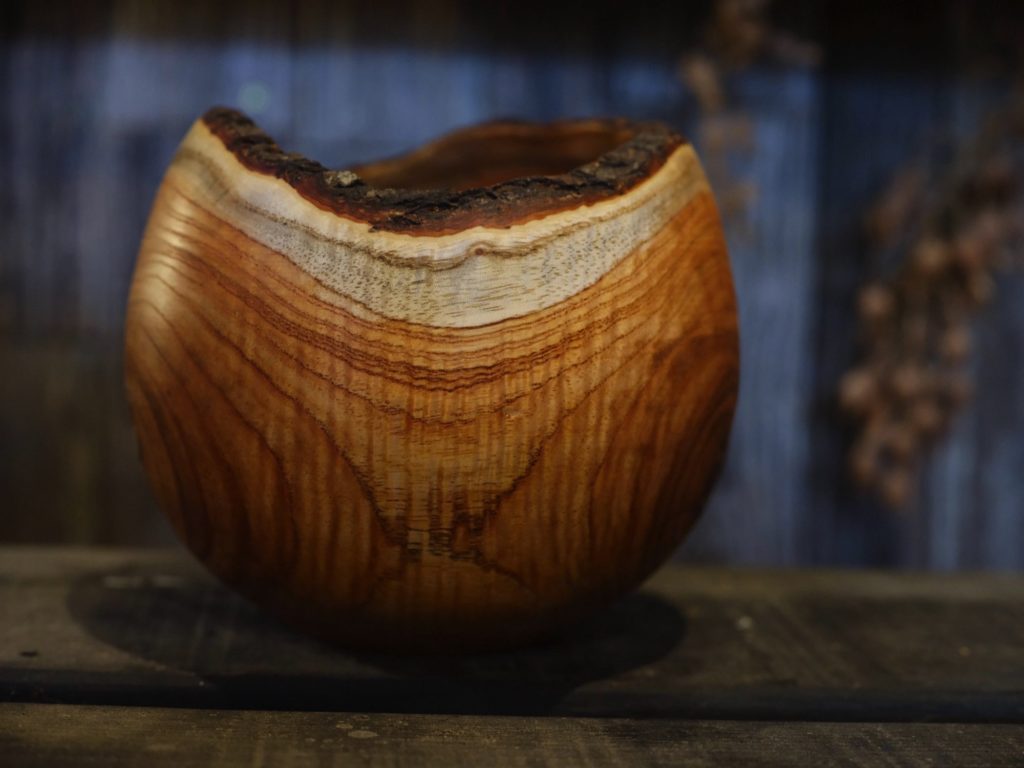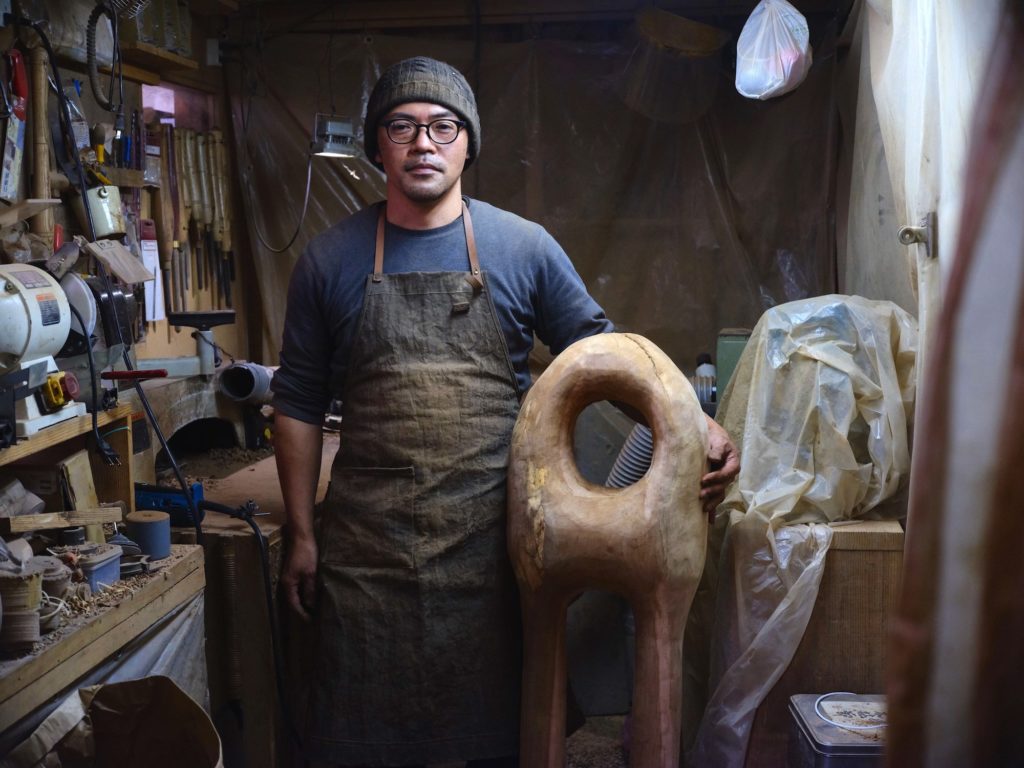The spherical form fits nicely in the hand, is easy on the eye, and emanates a warmth. Woodwork artist Tomoyuki Imada creates one-off pieces, each with a unique shape and color, but they all feature his signature rounded design. Imada is a native and resident of Amami Oshima. He named his business Woodworks CUE, a play on kyutai, the Japanese word for “globe.” His compact studio-shop is lined with products in a spectrum of sizes, from plates to bouquet vases and bud vases, to ornaments and accessories.

Imada made a U-turn back to Amami Oshima at the age of 24. He took up woodworking as a hobby while helping out at his family’s sawmill. In the beginning, he made pieces of furniture and small wooden trinkets from the lumber processed at the sawmill. Before he knew it, he became fascinated by the allure of spherical shapes.
“With lumber processed at the sawmill, the angular shape means the wood grains and patterns are quite predictable. Whereas the process of shaping a sphere on a lathe reveals beautiful, unexpected wood grains. It’s so much fun because even the same piece of wood can have a completely different grain expression depending on how I rotate the workpiece and move the cutting tool.”

Imada has another signature: All of the wood that he currently uses comes from Amami Oshima. Rather than using sawn lumber available on the market, he sources wood cut for garden trees and for field maintenance directly from the landscape gardeners and foresters. Imada settled on this style after working with a piece of sharinbai (Yeddo hawthorn), used in a traditional textile dyeing technique originating in Amami Oshima, which was given to him by his classmate and textile dyer Yukihito Kanai (Kanai Kougei).
“I cut the log and found it had a stunning color. That got me curious about Amami Oshima island. I was familiar enough with sharinbai, and knew what the tree looked like growing on the ground, but I started wondering what it looked like inside. Each tree has its own distinct hardness, scent, and color. There’s something to learn from every tree that I work with.”

Imada has worked with over 30 tree species to date, starting with those typical of the subtropical Amami climate—Chinese banyan, sharinbai, bishop wood, Fukugi tree, Buddhist pine. To take full advantage of the individual tree’s expression and features, he never sets to work with a finished shape in mind, but instead, starts turning and then decides where to go from there.
“Sometimes there’s a node or crack inside, and if I find one, then I’m lucky. Those irregularities that are considered defects by house builders and furniture makers, for me, are a focal point that I play up on purpose. I like to begin working on the lathe, and if a focal point turns up, then I would design an ornament around it, or if the wood is in solid condition, shape it into a flower vase. My work process is very fluid.”
Black ebony has a hard black core that was formerly used to make the neck of high-grade shamisen. Though it isn’t circulated on the market, Imada was able to obtain a log for the first time in about three years. The ornament he made from the rare wood highlights the brilliant jet black core with a distinct pattern that looks like an ink wash painting of a mountain landscape.
“It looks different depending on who’s looking at it. That’s another allure of spherical shaped woodworks. You never grow bored of the endless variety of expressions.”

woodworks CUE
25-7 Wako-cho, Amami-shi
[email protected]












